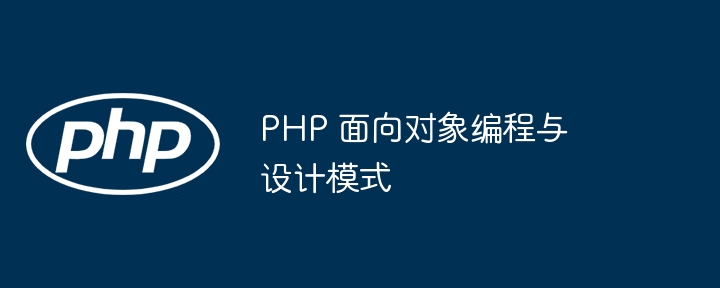
Object-oriented programming (OOP) is a programming paradigm that uses objects and classes to provide encapsulation, inheritance, and polymorphism to improve code maintainability. Design patterns are proven solutions to common software design problems. Commonly used design patterns in PHP include: Factory pattern: creates objects without specifying the actual class. Singleton pattern: ensures that a class has only one instance. Observer pattern: allows objects to subscribe to and React to events of other objects

Object-Oriented Programming (OOP) is a Programming paradigm, which is based on objects and classes. Objects represent real-world entities, while classes are the blueprints of objects, defining their state and behavior. OOP provides features of encapsulation, inheritance, and polymorphism that improve code maintainability and scalability.
Design Patterns are collections of proven solutions to common software design problems. They provide a way to apply general programming principles to specific scenarios. Here are some commonly used design patterns in PHP:
Factory Pattern: Various ways of creating objects without specifying their actual class.
Single case mode: Ensure that the class has only one instance.
Observer pattern: Allows objects to subscribe to and react to events from other objects.
Practical Case
Let us use the factory pattern to create a simple animal example:
interface Animal {
public function makeSound();
}
class Dog implements Animal {
public function makeSound() {
return "Woof!";
}
}
class Cat implements Animal {
public function makeSound() {
return "Meow!";
}
}
class AnimalFactory {
public static function createAnimal($type) {
switch ($type) {
case 'dog':
return new Dog();
case 'cat':
return new Cat();
default:
throw new Exception("Invalid animal type");
}
}
}
$dog = AnimalFactory::createAnimal('dog');
echo $dog->makeSound(); // Woof!In this example, the factory pattern allows us to Creates different animal objects of the given type. This improves the scalability of the code as we can easily add new animal types without modifying existing code.
The above is the detailed content of PHP object-oriented programming and design patterns. For more information, please follow other related articles on the PHP Chinese website!
 Object-Oriented Programming
Object-Oriented Programming
 Zero-based Java self-study tutorial
Zero-based Java self-study tutorial
 How to implement line break in alert
How to implement line break in alert
 How to set up domain name redirection
How to set up domain name redirection
 How long does it take for Douyin recharge to arrive?
How long does it take for Douyin recharge to arrive?
 The difference between master and host
The difference between master and host
 git undo submitted commit
git undo submitted commit
 How to turn off ics network sharing
How to turn off ics network sharing
 vue references js files
vue references js files




